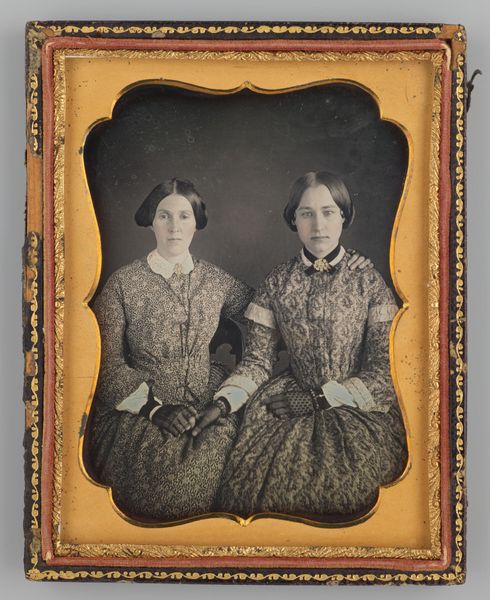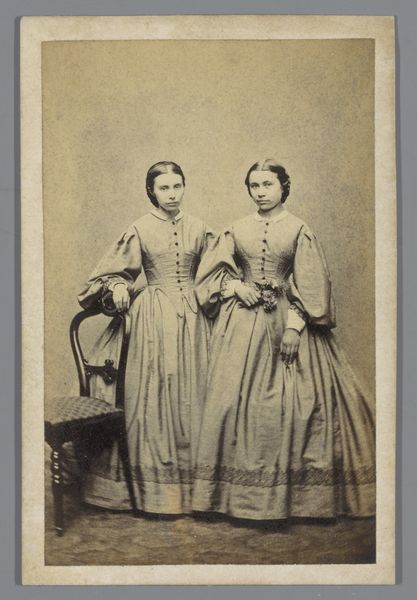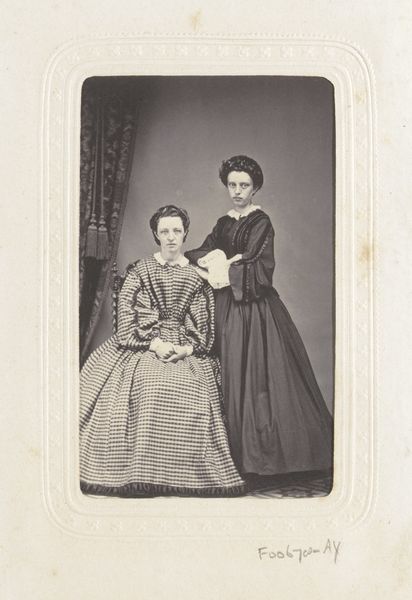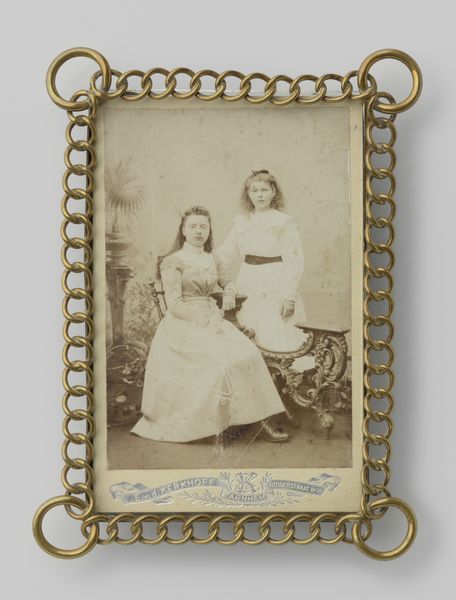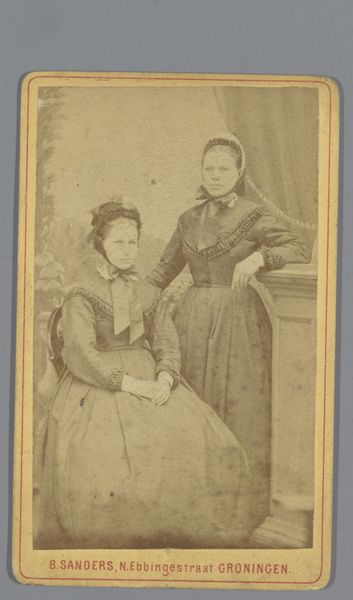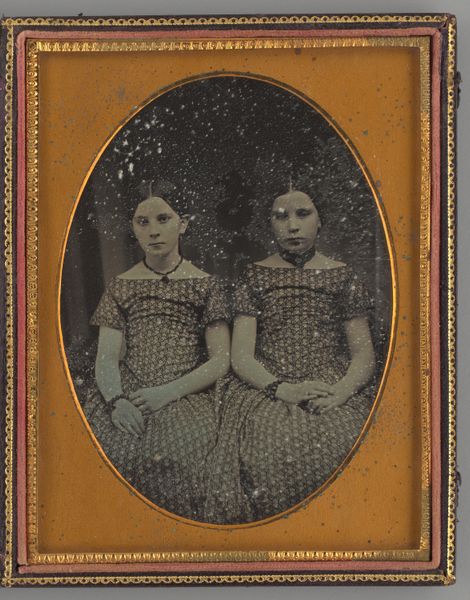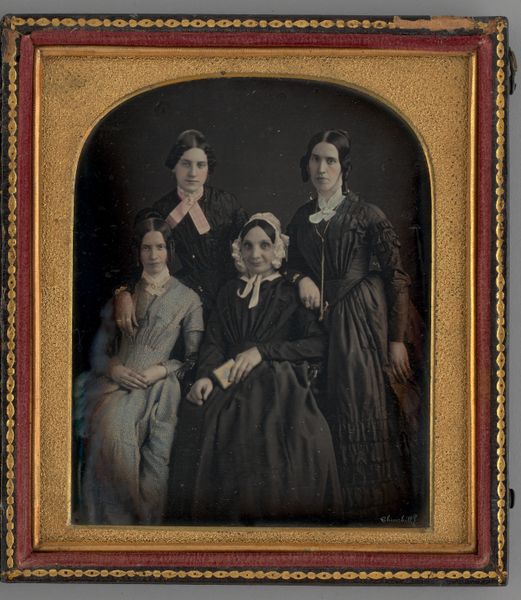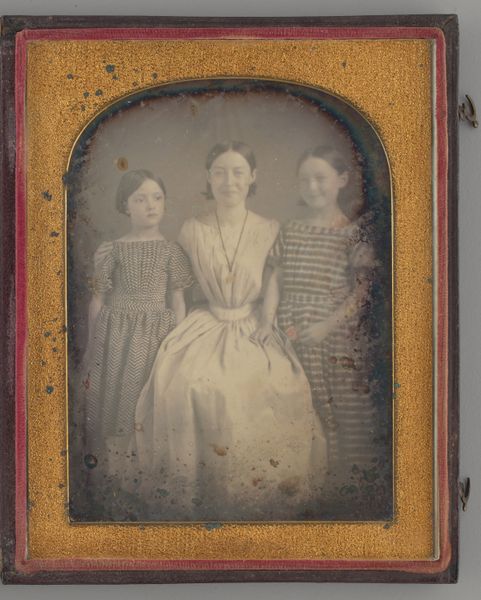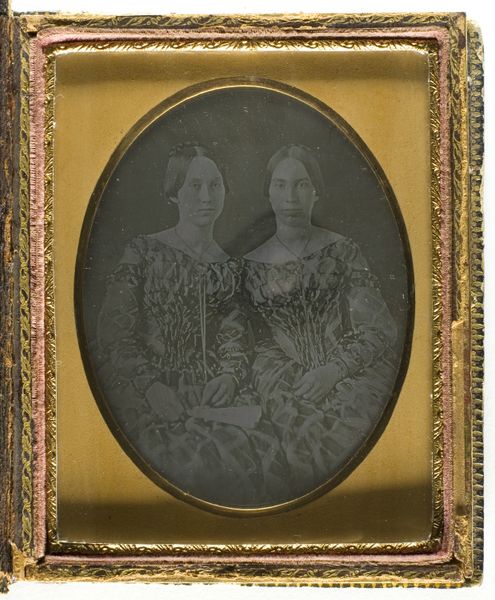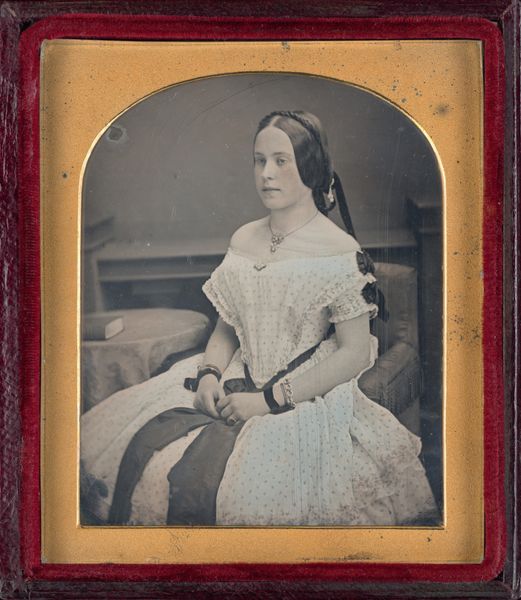
Untitled (Portrait of Seated Woman and Standing Girl) 1847
0:00
0:00
daguerreotype, photography
#
portrait
#
16_19th-century
#
daguerreotype
#
photography
#
geometric
#
realism
Dimensions: 13.9 × 10.8 cm (5 1/2 × 4 1/4 in., plate); 15.2 × 24.2 × 1.3 cm (open case); 15.2 × 12.1 × 1.8 cm (case)
Copyright: Public Domain
Otis Hubbard Cooley made this daguerreotype portrait of a seated woman and a standing girl, likely in the 1850s, a time when photography was rapidly changing portraiture. The daguerreotype emerged as the first commercially viable photographic process, offering a detailed and relatively affordable alternative to painted portraits for the middle class in countries like the United States. The rise of photography democratized image-making. Photography allowed for new ways of representing the social world in a way that painting never could. In this portrait, the sitters' poses and clothing reflect the social conventions of the era, but the new technology captured the nuances of individual likeness in a novel way. Daguerreotypes, due to their unique process, also challenged traditional notions of artistic reproduction and authorship. To fully understand this work, one needs to consider the social history of photography, looking at sources such as period advertisements, manuals, and social commentaries to reveal the complex relationship between art, technology, and society. This image reflects a pivotal moment in the history of visual culture.
Comments
No comments
Be the first to comment and join the conversation on the ultimate creative platform.

